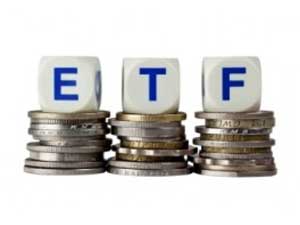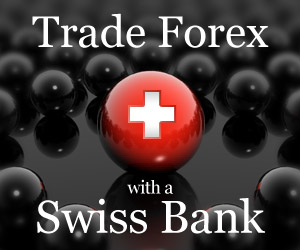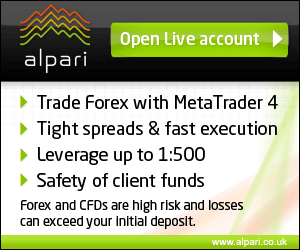ETF Investing - Different Types of ETFs
ETF investing offers you are a perfect investing mix, because you can choose among different types of ETFs, like index, country, sector, currency, commodity, short, leverage...
Within ETF investing you can choose among different types of ETFs. Most ETFs track the performance of a broad index, such as the Dow Jones Index, or it may track a specific country, sector, industry, commodity, or currency. In 2008 the U.S. Securities and Exchange Commission began to authorize the creation of actively managed ETFs. Besides, ETFs can be size-specific, leveraged or short.
Different Types of ETFs
U.S. Index ETF
An index ETF is considered the most common type of ETF investing, and tracks indices associated with certain stocks or bonds. An example of an index ETF would be PowerShares QQQ (ticker: QQQQ), which tracks the NASDAQ 100 index. Index ETFs are not actively managed, but represent a predetermined index of stocks or bonds.
Country-Specific (Foreign Market) ETF

The U.S. is not the only country to have market index ETFs. There are many foreign ETFs to choose from as well. If you're an investor looking for international exposure or to hedge foreign investing risk, country or region ETFs may be an option for you. A country-specific ETF tracks the performance of the economies of an individual country, like Germany, China or Brazil. An example of country ETF investing is Market Vectors Russia ETF (ticker: RSX), which tracks DAXglobal Russia Index. Some ETFs track a specific region such as Europe for example.
Sector & Industry ETF
A sector ETFs holding represents a segment of an economic market. Common sectors include Basic Materials, Consumer Goods, Financial, Government, Health Care, Industrial Goods, Services, Technology, and Utilities. An industry ETF represents a particular industry (more specific then broader sector), such as "Life & Health Insurance" within "Finance" sector, and provides investors the ability to track the collective performance of that industry. You can read more about different sector classifications in the Stock Market Content website.
Bond ETF
A bond ETF exclusively invests in bonds. Bond ETFs are very much like bond mutual funds in that they hold a portfolio of bonds and can differ widely in strategies, ranging from U.S. Treasuries to high yields, from long-term to short-term. Bond ETFs have a difficult task when it comes to construction since they track a low-liquidity investment product. Bonds are not active on secondary markets since they are normally held to maturity. Bond ETFs trade like stocks and are passively managed.
Currency ETF
A currency ETF provides investors the ability to track the performance of various currencies throughout the world, such as the U.S. dollar, Japanese yen or British pound, without having to complete complex transactions. Currency ETFs are seemingly simple investment vehicles that track a foreign currency, similar to how a market ETF tracks its underlying index. In some cases this type of ETF investing tracks a basket of currencies, allowing an investor access to more than one foreign currency.
Commodity ETF
Commodity ETFs attempt to track the price of a single commodity, such as gold or oil, or a basket of commodities by holding the actual commodity in storage, or by purchasing futures contracts. Because futures provide leverage, ETFs that use futures contracts have uninvested cash, which they usually park in interest-bearing government bonds. The interest on the bonds is used to cover the expenses of the ETF and to pay dividends to the holders.
Read more about:
Gold Index ETFs - Comparison Of Three Primary Gold Index ETFs Backed By Physical Gold
Silver Fund ETFs - Comparison Of Two Primary Silver Fund ETFs Backed By Physical Silver
Derivative ETF
There are some types of ETFs that do not consist of equities. Very common with commodity ETFs, some funds are made up of derivative contracts like futures, forwards, and options. While the goal is to emulate an investment product, there are different ways to do so within the construction of ETFs. Assets in the fund can either be individual companies or in these cases derivative products.
Size-Specific (Style) ETF
A size-specific ETF investing is defined by the market capitalization of the individual holdings within the fund. For example, the ETF may characterize its holdings as large-cap, mid-cap, small-cap, or even micro-cap to indicate the relative size of the companies that are held within the ETF. So, if you have a certain investment goal based on a market-cap style, you may be able to reach your target with a style ETF like the SPDR Dow Jones Large Cap Value ETF (ticker: ELV) which tracks the Dow Jones U.S. Large Cap Value Index.
Leveraged ETF
A leveraged ETF is designed to magnify the performance of an underlying index. This type of ETF investing provides investors with the prospect of amplifying their returns when the market responds in an expected direction. As a caution, if the market takes an unexpected turn, the investor will also magnify losses instead of gains.
Short (Bear Market Or Inverse) ETF
A short or bear market ETF is designed to return the inverse or opposite of an underlying index. The short ETF provides investors with an opportunity to benefit from declines in the underlying index. This is becoming a popular way for many investors to hedge their portfolio for downside risk in the markets.
Actively-Managed ETF
First there were mutual funds, with their active management and high fees. Then ETFs came, which keep their costs low by passively tracking an index. In 2008 first actively-managed exchange-traded funds started operating. They're supposed to offer investors the best of both worlds - professional management and low costs. An example of actively-managed ETF investing is AdvisorShares Dent Tactical ETF (ticker: DENT).
Largest 30 ETFs by 3-Months Average Trading Volume
The following table lists the top 30 largest exchange-traded funds, ranked by 3-months average trading volume as of 06/07/2010.
| Fund Name | Ticker | Category | Fund Family | Volume |
|---|---|---|---|---|
| SPDR S&P 500 | SPY | US Index | SPDRs | 244.353.000 |
| Financial Select Sector SPDR | XLF | Sector-Industry | State Street Global Advisors | 122.803.000 |
| PowerShares QQQ | QQQQ | US Index | PowerShares | 99.555.000 |
| iShares MSCI Emerging Markets Index | EEM | Country-Specific | iShares | 87.000.600 |
| Direxion Daily Financial Bear 3X Shares | FAZ | Leveraged | Direxion Funds | 79.722.600 |
| Direxion Daily Financial Bull 3X Shares | FAS | Leveraged | Direxion Funds | 78.878.000 |
| iShares Russell 2000 Index | IWM | US Index | iShares | 77.446.700 |
| ProShares UltraShort S&P500 | SDS | Leveraged, Short | ProShares | 45.852.300 |
| Direxion Daily Small Cap Bear 3X Shares | TZA | Leveraged, Short | Direxion Funds | 37.456.200 |
| iShares FTSE/Xinhua China 25 Index | FXI | Country-Specific | iShares | 32.357.200 |
| United States Natural Gas | UNG | Commodities | ALPS Distributors | 29.116.200 |
| iShares MSCI EAFE Index | EFA | Country-Specific | iShares | 26.291.400 |
| iShares MSCI Japan Index | EWJ | Country-Specific | iShares | 25.301.700 |
| Energy Select Sector SPDR | XLE | Sector-Industry | State Street Global Advisors | 23.802.500 |
| iShares MSCI Brazil Index | EWZ | Country-Specific | iShares | 23.495.100 |
| ProShares Ultra S&P500 | SSO | Leveraged | ProShares | 21.993.700 |
| iPath S&P 500 VIX Short-Term Futures ETN | VXX | Volatility | iPath | 20.762.800 |
| ProShares UltraShort QQQ | QID | Short | ProShares | 19.895.700 |
| Industrial Select Sector SPDR | XLI | Sector-Industry | State Street Global Advisors | 18.342.400 |
| SPDR S&P Retail | XRT | Sector-Industry | State Street Global Advisors | 17.221.600 |
| iShares Dow Jones US Real Estate | IYR | Real Estates | iShares | 17.156.700 |
| SPDR Gold Shares | GLD | Commodities | State Street Global Advisors | 17.065.400 |
| Semiconductor HOLDRs | SMH | Sector-Industry | Merrill Lynch | 16.778.400 |
| Vanguard Emerging Markets Stock ETF | VWO | Diversified Emerging Markets | Vanguard | 16.710.900 |
| ProShares UltraShort Financials | SKF | Leveraged, Short | ProShares | 15.978.400 |
| iShares MSCI Taiwan Index | EWT | Country-Specific | iShares | 14.741.400 |
| Materials Select Sector SPDR | XLB | Sector-Industry | State Street Global Advisors | 13.527.700 |
| United States Oil | USO | Commodities | ALPS Distributors | 13.144.200 |
| SPDR Dow Jones Industrial Average | DIA | US Index | SPDRs | 12.963.500 |
| Market Vectors Gold Miners ETF | GDX | Sector-Industry | Van Eck | 12.869.000 |
Source: Yahoo Finance
Difference Between ETF and ETN
ETNs - Exchange Traded Notes are not truly a type of ETF, even if people and some financial portals still lump them into the major ETF categories. ETNs are issued by a major bank as senior debt notes. When you buy an ETN, you receive a debt investment similar to a bond. ETNs are backed by high credit rating banks so they are considered secure investment products, however the notes are not totally absent of credit risk.
Just like ETNs, also ETCs exist. ETC is abbreviation for Exchange Traded Commodities and have the same characteristics like ETNs.
Written by: Goran Dolenc
Do you find this content useful? Like! Tweet! Recommend! Share!
Related Articles

China ETF Opportunities - Which One to Select?
Selecting appropriate China ETF can be crucial when you are looking for a way to get exposed to this highly growth country with endless opportunities.

Currency ETF - Top 5 Exchange Traded Funds for Next Five Years
We made a research and comparison of currency ETF funds with highest potential return over the next five years, according to global economic situation.
Back from ETF Investing to Exchange Traded Fund
Back from ETF Investing to Best Online Trading Site for Beginners home page







